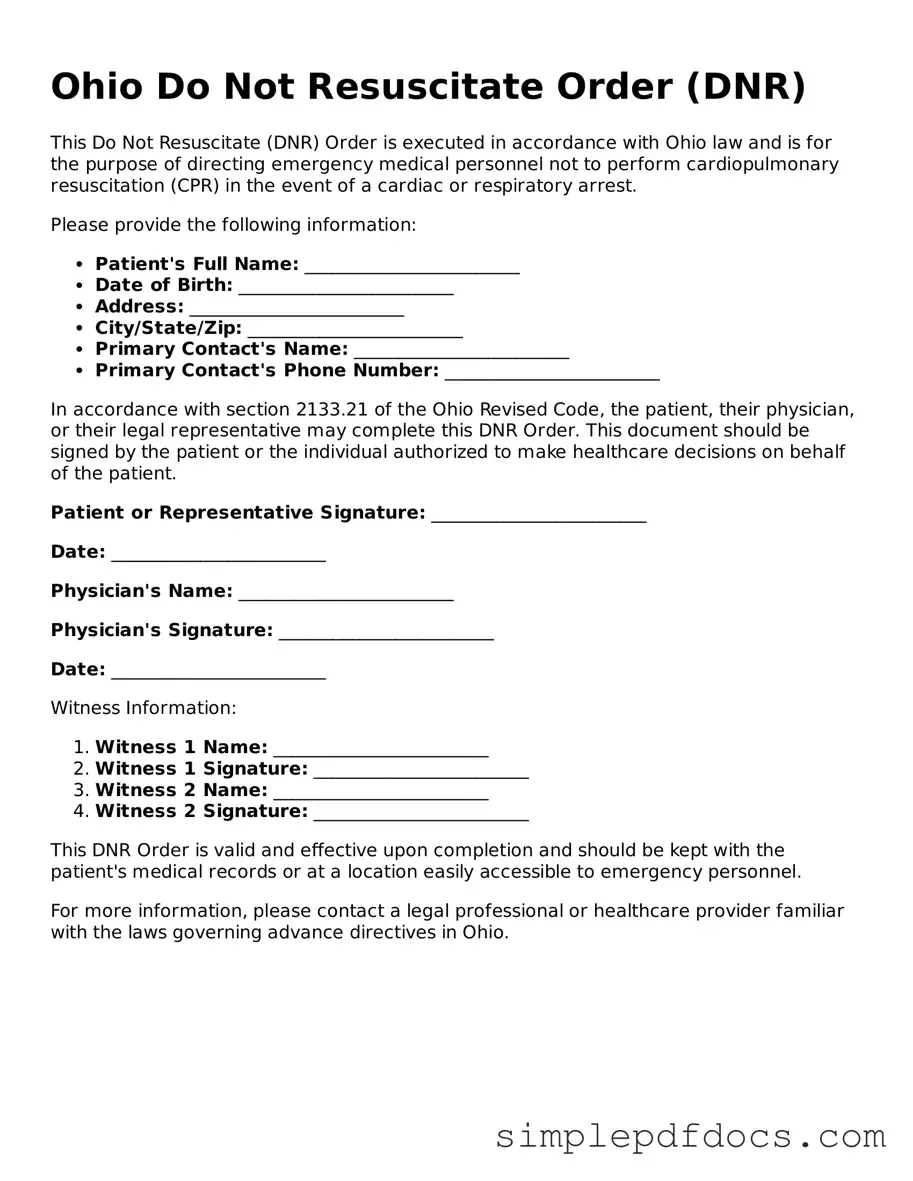Legal Do Not Resuscitate Order Document for the State of Ohio
The Ohio Do Not Resuscitate Order (DNR) form is a legal document that allows individuals to express their wishes regarding resuscitation efforts in the event of a medical emergency. By completing this form, a person can indicate that they do not want to receive cardiopulmonary resuscitation (CPR) or other life-saving measures if their heart stops or they stop breathing. Understanding how to properly complete and utilize this form is essential for ensuring that one's healthcare preferences are respected during critical moments.
Get Document Here
